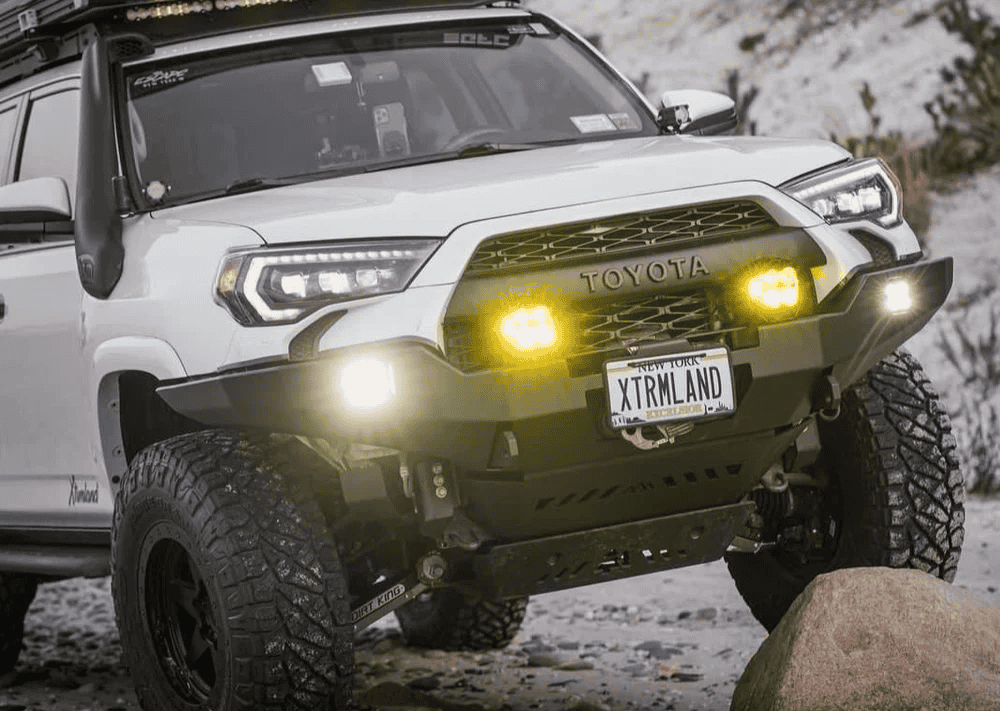Overland Vehicles

Building an overland truck is a sequence of choices that stack costs quickly. The base vehicle is the foundation, and its purchase price sets the floor for the entire budget. A newer platform with fewer miles often reduces repair spend later, while an older bargain may need immediate service, fluids, belts, and bushings. Factor registration, taxes, and insurance at the start so the real total is clear.
Suspension and tires are the first big upgrades. Quality coilovers or leaf packs with tuned damping improve ride and control on rough roads. Expect to add matching upper control arms or helper springs so geometry stays correct. Tire size changes often require recalibration, potential regear, and a thorough alignment. Good all terrain tires save money over the life of the build because traction and puncture resistance prevent trail side issues.
Armor and recovery gear protect your investment. Front and rear bumpers, skid plates, rock sliders, and a receiver or winch add weight and real capability. Add soft shackles, a recovery rope, and rated points to keep extractions controlled. Remember that steel parts influence spring rates and ride height, so plan suspension with final weight in mind.
Power systems keep fridges cold and devices charged. A dual battery with DC to DC charging, a compact inverter, solar input, and distribution panels form a dependable core. Lithium batteries reduce weight and increase usable capacity, but they cost more up front. Smart wiring, proper fusing, and clean routing are not glamour items, yet they prevent roadside headaches.
Interior storage and sleeping solutions vary wildly in price. A modular drawer system, slide for a fridge, and a flat sleep platform solve most needs. Soft goods like window covers, bedding, and organization bags look minor but add up. A canopy or shell with integrated lighting turns the bed into a weatherproof workspace. Roof racks and tents extend sleeping space, though rooftop tents bring added wind drag and fuel use.
Labor is the multiplier that many underestimate. Fabrication for brackets, tabs, and mounts ensures parts fit correctly and serviceability remains. Wiring done right takes time, especially when labeled and protected. A shop with documented processes will often finish faster and avoid redo costs that eat budgets. Review itemized quotes to understand where hours are spent.
Totals vary by region and parts availability. Freight, powder coat, and shop supply fees can shift numbers by several percent. Plan a contingency of ten to fifteen percent to cover the unknowns that appear once the truck is on a lift.
These are not rules, they are reference points. The right spend depends on where you wheel, how long you stay out, and how comfortable you want to be during bad weather.
Shipping for heavy parts can be significant. Tire shops charge for mount and balance on larger sizes. After lift installs, a precise alignment is essential. Heavier rolling mass reduces fuel economy. Some trucks need regear to restore drivability. Finally, maintenance intervals often shorten because dust, mud, and weight ask more of bearings and fluids.
If you want a professional plan that avoids low value spend, explore Overland rigs to see how a cohesive package keeps costs predictable.
Complex builds benefit from experience. Shops that specialize in overland trucks know which components play well together, how weight impacts handling, and how to route wiring for easy service. They also help sequence the build so you do not pay twice for labor when parts come later. A thoughtful design phase leads to fewer surprises once the truck is in the bay.
Partial upgrades are often the smartest path. Start with suspension, tires, and a reliable power core. Then add armor and storage. A seasoned team can tune ride height to final weight and set damping for your loadout. See what a tailored package looks like on Custom overland upfit to understand how curated parts and workmanship protect your budget.
Reliable outcomes also come from process. Clear documentation, tidy looms, and serviceable mounting make trail fixes and future upgrades straightforward. Want to know how a shop’s values translate into better rigs and ownership experience? Read Why choose OZK Customs for a window into build philosophy.
You now have the levers that set the cost of building an overland truck, from platform choice to suspension, armor, power, and storage. If you are ready for a price that mirrors your terrain and travel style, we can help you chart a parts list and timeline that make sense. OZK Customs builds overland rigs end to end, and we also perform partial upfits when you want to move in smart stages. Start the conversation, share your must haves, and we will turn a clear budget into a capable truck you can trust on any road.
Ready to price your overland truck with clarity and no surprises? Share your goals and timeline and we will map a parts list, labor plan, and budget that fits. From partial upfits to complete custom builds, OZK Customs delivers reliable rigs designed around how you travel.
ADDRESS:
6159 E Huntsville Rd, Fayetteville, AR 72701
PHONE:
(479) 326-9200
EMAIL:
info@ozkvans.com